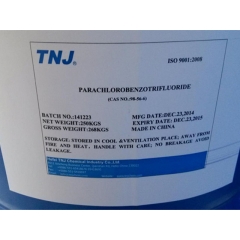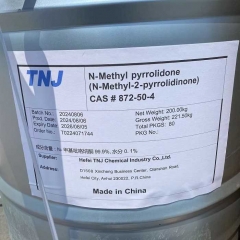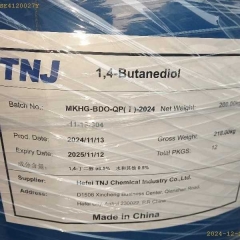Morpholine CAS 110-91-8 is colorless and hygroscopic liquid in normal temperature. It smells special ammonia. It can be soluble in any volume water. It is soluble in such organic solvents as aromatic hydrocarbon, alcohol, ketone, aether and other organic solvents. It is slightly soluble in mineral oil and aliphatic hydrocarbon. It has slight toxicity. Morpholine reacts with inorganic acid to generate salt, with organic acid to generate salt or acylamide.
Morpholine is very important solvent used commonly in industrial production, organic synthesis and pesticides production etc.
Specification
Appearance Colorless transparent liquid
Color, Hazan ≤ 10
Water, % ≤ 0.20
Density, g/cm3 at 20C° 1.001-1.003
Assay, % ≥ 99.50
Application
Industrial applications
Morpholine is a common additive, in parts per million concentrations, for pH adjustment in both fossil fuel and nuclear power plant steam systems. A great deal of morpholine is used for antirust, descaling and metal cleaning, especially for antirust and anticorrosive in high temperature conditions. In boiler maintenance fields, amount of morpholkine is also used as descaling agent. Owing to its unique chemical characters, morpholine has become one of the most important fine petroleum chemical products and its applications are very wide.
Organic synthesis, medical and pesticide
It is commonly used to generate enamines. Morpholine is widely used in organic synthesis. For example, it is a building block in the preparation of the antibiotic linezolid, the anticancer agent gefitinib (Iressa) and the analgesic dextromoramide. Its application in such fields as medicine, pesticide, animal medicine, petroleum and extraction of coke aromatic hydrocarbon have been ceaselessly developed and carried out.
Agriculture
As a fruit coatingMorpholine is used as a chemical emulsifier in the process of waxing fruit. Naturally, fruits make waxes to protect against insects and fungal contamination, but this can be lost as the fruit is cleaned.
As a component in fungicides
Morpholine derivatives used as agricultural fungicides in cereals are known as ergosterol biosynthesis inhibitors such as Amorolfine, Fenpropimorph, Tridemorph
Packing
200kg/steel drum, 80 drums/20"FCL
















 chemical.tnj
chemical.tnj +8618949823763
+8618949823763 tnjchem
tnjchem 2881500864
2881500864